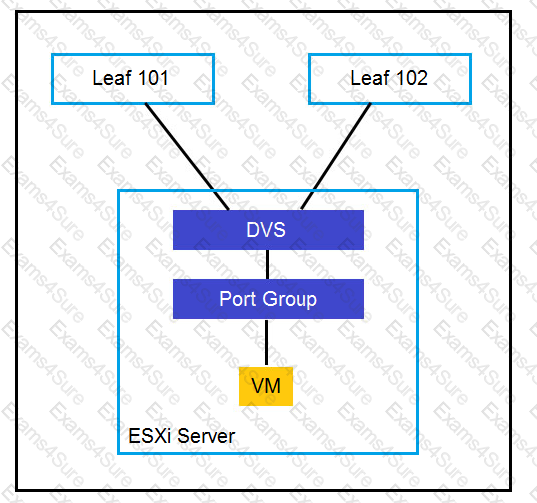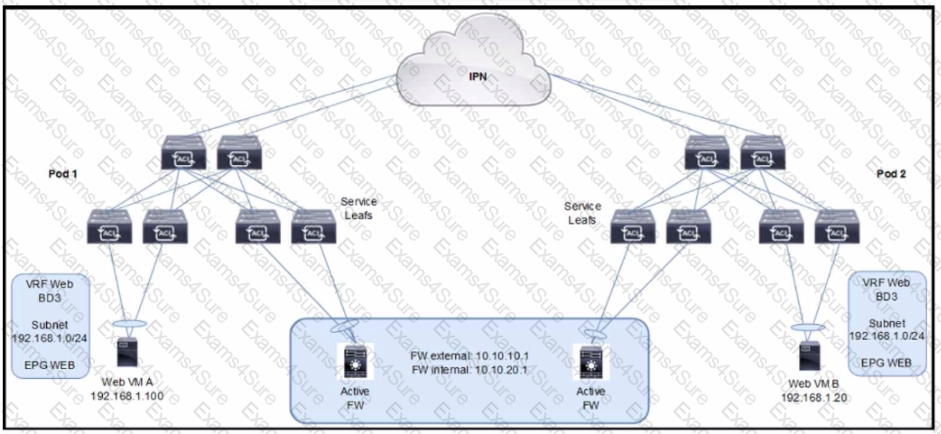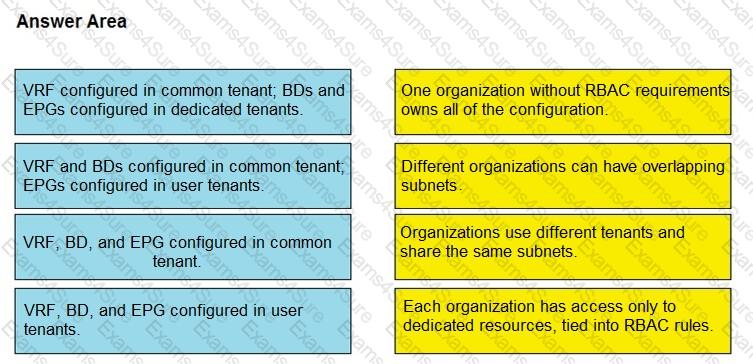Implementing Cisco Application Centric Infrastructure - Advanced (DCACIA)
Last Update 2 months ago
Total Questions : 119
Implementing Cisco Application Centric Infrastructure - Advanced (DCACIA) is stable now with all latest exam questions are added 2 months ago. Incorporating 300-630 practice exam questions into your study plan is more than just a preparation strategy.
300-630 exam questions often include scenarios and problem-solving exercises that mirror real-world challenges. Working through 300-630 dumps allows you to practice pacing yourself, ensuring that you can complete all Implementing Cisco Application Centric Infrastructure - Advanced (DCACIA) practice test within the allotted time frame.
What is the advantage of implementing an active-active firewall cluster that is stretched across separate pods when anycast services are configured?
An engineer configures Cisco ACI Multi-Site and must specify the control plane TEP IP for spines. Which statement describes control plane TEP IP in this situation?
Leaf 1002 receives a packet from a host attached to Leaf1001. The packet contains the MAC address. IP address, and VRF of the source. Which information does each node learn?
Which action must be taken to connect two nonsilient servers in active/standby mode to two ACI leaves?
Refer to the exhibit.

An engineer is configuring a vSwitch policy in the existing Cisco ACI fabric. The requirement is for the Cisco ACI leaf to learn individual MAC addresses from the same physical port. Which vSwitch policy configuration mode must be enabled to meet this requirement?
Refer to the exhibit.

An engineer is deploying a Cisco ACI Multi-Pod with an independent active/active Layer 3 firewall cluster across the pods. Which task must the engineer perform to prevent the creation of duplicate IP/MAC entries across the pods?
A cloud provider must make a pair of firewalls available to all tenants. Each tenant defines its own service graph. Where should the Layer 4 to Layer 7 service be configured to accomplish this goal?
Drag and drop the tenant implementation designs from the left onto the outcomes of the design when a greenfield Cisco ACI fabric is deployed on the right.

Which two actions are the Cisco best practices to configure NIC teaming load balancing for Cisco UCS B- Series blades that are connected to the Cisco ACI leaf switches? (Choose two.)


TESTED 29 Mar 2025
Hi this is Romona Kearns from Holland and I would like to tell you that I passed my exam with the use of exams4sure dumps. I got same questions in my exam that I prepared from your test engine software. I will recommend your site to all my friends for sure.
Our all material is important and it will be handy for you. If you have short time for exam so, we are sure with the use of it you will pass it easily with good marks. If you will not pass so, you could feel free to claim your refund. We will give 100% money back guarantee if our customers will not satisfy with our products.